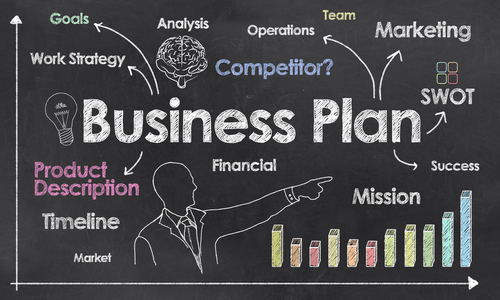A business plan is the manual in which you will have to define the mission of your company, what your weaknesses and strengths are, what strategy you are going to follow, who is your ideal customer or what type of financing you need. It is very useful both to show you to the others (investors, financial entities, call for aid, etc.) and to get to know you better internally.
In short, it is an instrument that serves to assess whether your idea is viable and, if so, define the path to follow to implement it.
How to make a business plan?
- Detect the problem and its solution
Ask yourself: why does your company exist? Why start a business? precisely at this time? The first thing you should do when preparing a business plan is to detect the problem or the needs that your business is going to solve. Because, if you want consumers to choose you over the competition, you must give them something they don’t have, add value, offer them a solution. This idea must be reflected in your business plan also in the storytelling that will be the basis of your marketing strategy. In other words, you must know what makes you different.
2. Mission, vision and values
These three terms appear on most corporate websites of large multinationals. So if you’re wondering: yes, they should also be in your business plan. Do you know what they mean?
-Mission: the purpose of the company (or point number 1 of this list).
-Vision: where are you going (you are one step away from revolutionizing electronic commerce! for example).
-Values: how things are done (does it care about the environment? does it take care of its employees? is it committed to innovation?… that kind of thing).
3. Analyze the competition
The important thing here is to be aware of the size of the market and the small portion in which the company will work, or what is the same, does it have a future? This section contains information on the situation of the company and the competition, what the current trends are, who the potential clients are and what it brings as something new to the business world.
One of the basic tools that you can use to study the environment is the SWOT analysis:
-Strengths: what sets you apart from others.
-Weaknesses: disadvantages compared to the competition.
-Opportunities: what market niche is not yet exploited.
-Threats: problems that you are going to find when landing in that market.
4. Business model
Once you know what problems there are and how to solve them, you have to think about how to develop the idea and monetize it. What kind of business is it going to be, how to show the product.
Once the business model has been decided, it is time to establish the value or pricing that your products will have. You must consider, among other factors, the company’s costs or the customer’s lifetime value, that is, how long-lasting your relationship can be.
5. How to reach customers
The ideal client is the fictitious representation of your final consumer. In other words, when preparing your business plan, you should think about what kind of person is going to use your business or your product. How old is, what does he likes, what does he need from you, what does he value in a business… The more data, the better. Because with them you are going to establish the communication channels (advertising, social networks…) and the content. Would you communicate the same with a 60-year-old man as with a 25-year-old woman?
6. Financial Summary
It is necessary to know the economic solvency with which the company starts to face an uncertain future and in an increasingly competitive world. Be clear about where the income comes from, who or who contributes the initial capital, what fixed expenses there are, how and when the suppliers will be paid… In this sense, you have to differentiate between capital expenses, used to acquire the company’s goods , and operating expenses, to maintain and improve the physical assets of the entity.
7. The team
Human capital is the fundamental pillar of a company. Companies are, above all, people. So don’t hesitate for a moment when it comes to offering a comfortable and practical workspace, good salary conditions, flexibility. If your workers go to the office happy, they will be more motivated and will produce more, and consequently, your results will be better. So, don’t hesitate!
Of course, it is not about telling in your business plan that you are going to put a billiard table in the office, but about indicating the roles that are needed, the tasks of each one, the conditions, etc.
8. Where we come from and where we are going
It is the only way to know what steps are next in your entrepreneurial project. What is the goal?
9. Do you need an advisory board?
Even if you manage to create an environment of trust, within the team it is important to have an advisory board that serves as a mentor for newcomers and is responsible for solving any adversity that arises in the company. Startups and departments such as Human Resources, Logistics, Marketing or Finance usually have it.
10. Search for financing
Every company needs resources, and it is here, in the business plan, where you have to establish what they can be. It depends on the company, in addition to the internal investment of the company’s own partners, it may also be necessary to have external financing.
These ten points must be present in your business plan, but adapt to the new times and be specific and direct in each of them.



